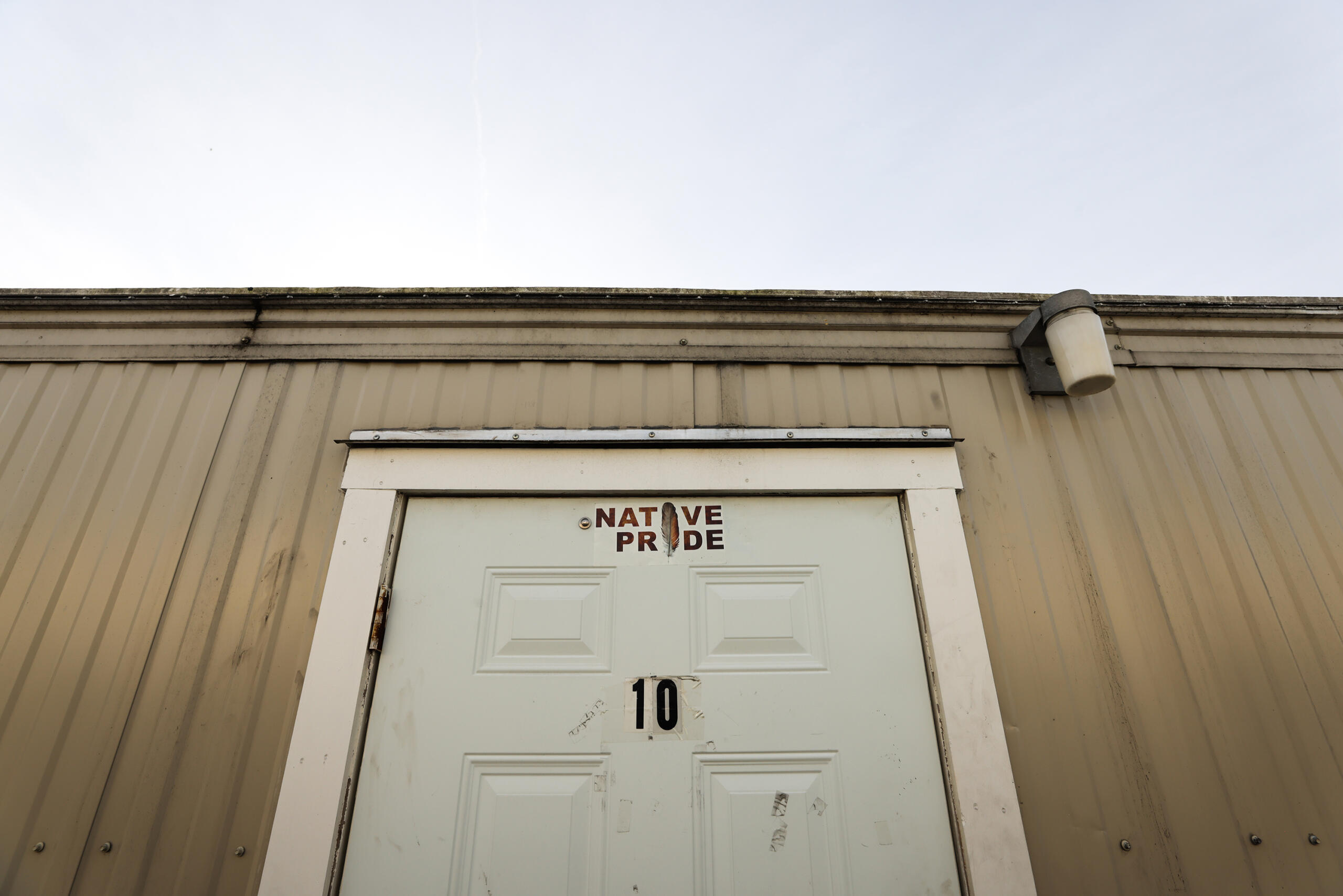A Seattle homeless shelter for Native people, who experience among the highest rates of homelessness, is set to close in a few months so King County Metro can use the space as a parking lot.
Chief Seattle Club, a homelessness nonprofit serving Indigenous people, opened Eagle Village in 2019 on a Sodo parking lot loaned by Metro. King County helped the club acquire six trailers and five Pallet shelters, similar to tiny homes. Native American murals are painted on the sides of two of the trailers. The village can provide shelter for more than 30 people at a time, and it has generally been at capacity.
The village is set to shut down at the end of March because a special permit to use the land is expiring and Metro intends to take back the lot to store vehicles.
King County spokesperson Kristin Elia said that Eagle Village was always meant to be temporary, “planned as a two-year bridge housing pilot project,” that was extended twice. Chief Seattle Club Executive Director Derrick Belgarde disputed that’s how the county communicated the terms to the club, but said he was aware the special permit was expiring.
While King County and the Regional Homelessness Authority agree on the need for services that take into account culture, history and unique reasons contributing to Indigenous homelessness, there isn’t urgency to maintain this site.
Without Eagle Village, there are 53 shelter beds in King County that are designed to serve American Indian and Alaska Native people — about 0.1% of the total shelter beds.
Belgarde said that many Native people only access homelessness services that are culturally sensitive.
“Because we’ve been burned so many times by non-Native people,” Belgarde said.
American Indian and Alaska Native people make up only 2% of King County’s overall population, but 9 to 15% of the homeless population, according to the last two annual counts of homelessness. Data from the county’s Homeless Management Information System shows about 5% of people receiving homelessness services are Native.
King County Executive Dow Constantine said in 2019 that he was trying to address this disparity with the creation of Eagle Village.
“It is unconscionable in this part of the country, in King County, and central Puget Sound, with all of this wealth that we are continuing to see these kinds of rates of homelessness and these extraordinary rates of homelessness in the Native population, and that’s why King County is partnering with Chief Seattle Club on Eagle Village,” Constantine said in a speech celebrating its opening.
King County Regional Homelessness Authority spokesperson Anne Martens agreed last week, saying it’s important to maintain the types of services Chief Seattle Club provides “given the disproportionality of homelessness among the (American Indian/Alaska Native) population, and the importance of cultural relevance in serving that population.”
Elia said that King County has worked with Chief Seattle Club to open more than 200 units of permanent supportive housing for Native people since 2022, with 120 more units set to open in Lake City next year.
The more than 30 people staying at Eagle Village are set to transition into those permanent housing beds that will open up by March.
Many who work in the homelessness system believe that most people can move from the street straight into permanent housing successfully, and that limited resources should be largely prioritized on fully addressing a person’s homelessness rather than stopgap measures like shelter.
But James Lovell, Chief Seattle Club’s chief community development officer, says shelter and housing are “different pieces of the puzzle.”
At Chief Seattle Club, homeless people typically move from the street to its shelter then onto housing.
Lovell said the shelter step is important to stabilize people who may have mental health or substance use issues. At shelters, staff can enter people’s rooms with fewer restrictions to check in and encourage them to engage with services.
In permanent housing, Lovell said that’s harder because laws require staff to provide 48 hours before they enter the unit.
Chief Seattle Club is seeking to create another modular shelter community or tiny house village to replace the beds lost from Eagle Village. Director Belgarde said the club has identified several sites and has funding to operate it, at least through the end of the year, but needs about $1 million to purchase and install the modular shelters.
The trailers at the existing site are at the end of their life span, according to Belgarde and the county. They were an experimental model of homeless shelters in King County in 2019, originally used to house oil workers in Texas. King County spent $3 million dollars to acquire, transport and install them.
Belgarde said the model itself was great, especially having separate bathrooms for each person, but the condition of the trailers when they received them from Texas was worse than expected. He said there were leaks and windows constantly needed to be recaulked.
Chief Seattle Club has asked for an extension on the permit for Eagle Village, which the county said it is considering.



